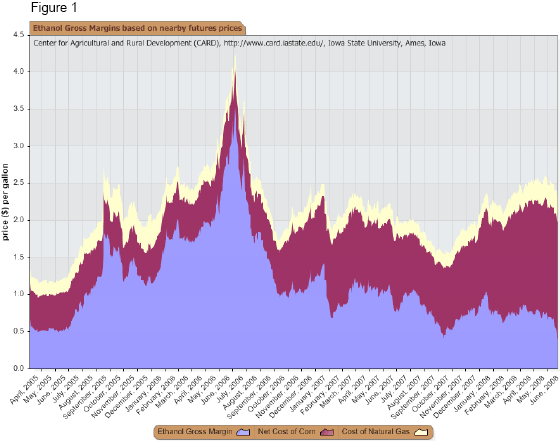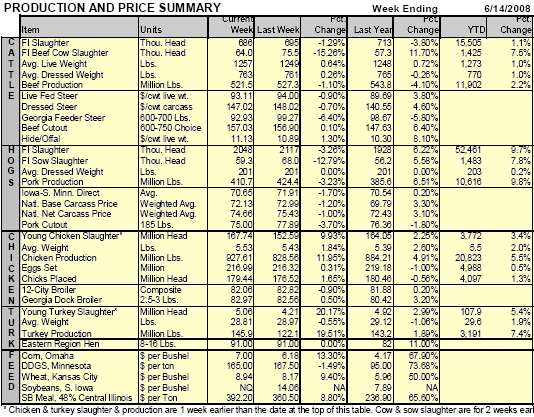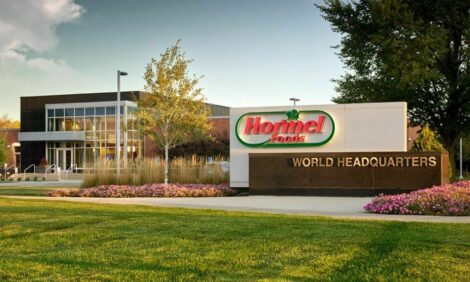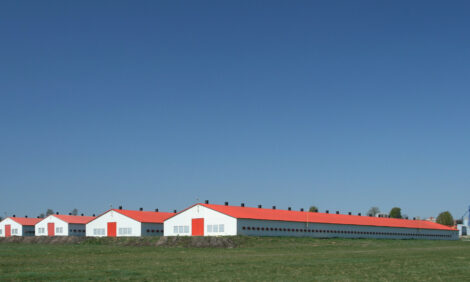



CME: "Who will Cut Back to Ration Corn Supply?"
US - CME's Daily Livestock Report for 13th June, 2008.Editorial note: We have changed the notation for our cow slaughter data in the table at left. A reader brought to our attention that our table said “FI Cow Slaughter” but the number represented only beef cows. Beef cow slaughter does not represent nearly all of either cow slaughter or the supply of grinding beef. But beef cow slaughter is the factor that will have the largest impact on feeder and slaughter cattle supply in the future, so we have stuck with the beef cow data and changed the label. If any reader has strong feelings for including total cow slaughter, please drop a line. We will surely listen.
| E-Livestock Volume | 6/13/08 | 6/12/08 | 6/6/08 |
|---|---|---|---|
| LE (E-Live Cattle): | 9,090 | 6,448 | 11,060 |
| GF (E-Feeder Cattle): | 378 | 690 | 405 |
| HE (E-Lean Hogs): | 13,225 | 17,994 | 23,597 |
The worst of the flooding is apparently over for the western
two-thirds of Iowa but the eastern one-third is seeing far and away the
worst flood in recorded history. For any readers in those areas, our
thoughts and prayers are with you and yours. Of course this is probably just
the start of flood conditions as all of this water has to move through the Mississippi
Valley in coming weeks. The Missouri River is not nearly as swollen
as it was in 1993, so St. Louis and southward may be spared. Most of the
trouble is expected in northeast Missouri and western Illinois.
Agriculture is full of ironies. Record crops cause low prices. Producers
adopt a new technology that enhances animal well-being and they
swamp the market. Perhaps the biggest irony I have ever heard is predictions
in the past two weeks from two noted climatologists that we may still
have a drought this summer! Dr. Elwyn Taylor told a World Pork Expo audience
exactly that on June 6 when he cited the 18-year drought cycle and
pointed out that we are already a year past due. In addition, 16 of the pat 17
Midwestern droughts have been preceded by a drought in Southeastern
states the prior year and only twice has a Southeastern drought provided a
false alarm. Drew Lerner of World Weather, Inc. cited some of those same
factors in pointing out during CME Group’s Grain Outlook Webinar on Thursday
that the odds were good for dry conditions this summer. Any dry conditions
this summer could have major impacts on both corn and soybeans
since wet conditions to date will likely cause relatively shallow root systems.

“Who will cut back to ration the corn supply?” We will hear that question ad nauseam over the next year and it should always be considered subject to a time frame. The challenge for livestock feeders (and especially hog feeders) is that they can’t just stop feeding. Chicken producers can respond relatively quickly and the cattle industry could put more roughage in diets (assuming it is available) and possibly leave cattle on grass but there are limitations to those changes and even they take time. About the only thing hog producers could do in dire straits is to slaughter pigs before they reach normal market weight. Exports and ethanol usage could halt pretty quickly if the economics dictated it and the latest ethanol gross margin data from Iowa State (see Figure 1) say that just such a circumstance could be developing. Gross margins are lower than last August when some plants shut down and construction was suspended on several others. Lower ethanol prices are the big driver in recent weeks though higher corn and gas prices have pressured margins as well.









